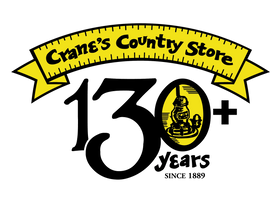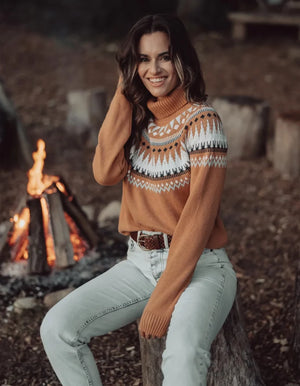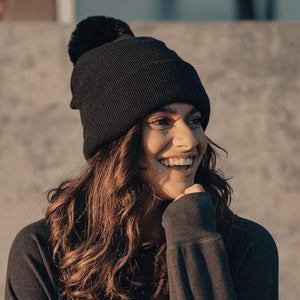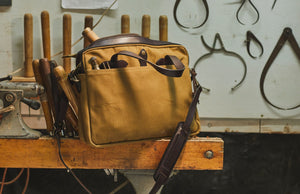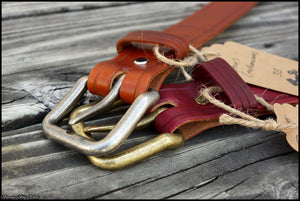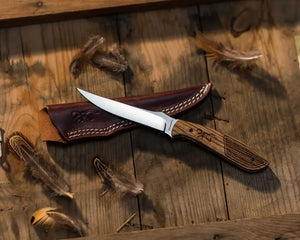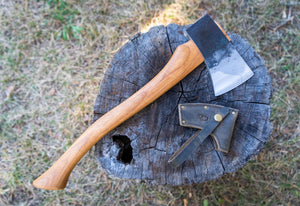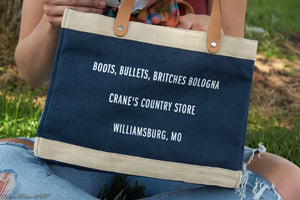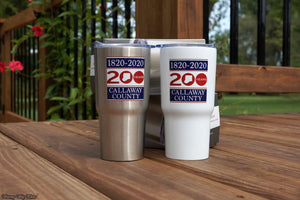
Beginner’s Must-Have Deer Hunting Gear
The best part of fall isn’t the crunchy leaves beneath your feet or the taste of pumpkin spice. It’s seeing antlers poke through the brush ahead. Trust us. We’ve waited all summer to hear a grunt in the distance and the sound of something walking our way.
If you’re a beginning deer hunter, you may be questioning what to bring or wear hunting. Don’t worry! We can help you get in the stand this deer season. Hunting, like many hobbies, requires an initial investment. But you won’t regret buying that rain jacket when you’re crouched in a downpour or the investment in those boots that keep your toes toasty on cold mornings.
Suit up this deer season with our top gear recommendations.
Jump to:
What to Wear Deer Hunting: 5 Essentials
When you think about hunting, you know you’ll need a rifle or bow. But have you thought about what you’ll wear beyond camo?
1. Hunting Jacket
In a Midwestern fall, you experience a range of temperatures, so you’ll want to dress in layers. It may be chilly and damp when you leave for the woods at dawn, but you can expect the day to heat up as the sun comes out. Layers help you stay comfortable outside as the temperature changes. You don’t want to be caught unprepared and uncomfortable.
Start with a base layer that will keep you dry. Then, add your insulation (try a sweatshirt or light down jacket) and your protective outer shell.
A water-resistant jacket will save the day if it starts to rain. No showers in the forecast? If you plan to hunt from a tree stand, a rain jacket can also serve as a windbreaker.
What to Look for in A Hunting Jacket
- Temperature. Choose a jacket that fits the weather. For early fall, a soft-shell jacket may suffice. During late season deer hunting, you may swap in a puffer jacket with down or synthetic insulation to keep you warm.
- Breathability. Consider where you will be hunting. Are you hiking miles and miles to your spot? Will you be sitting still in a tree stand for hours? Depending on your plan, you may want a breathable layer for longer treks or heavy insulation for hours in the stand.
- Pockets. You’ll need plenty of them. Where will you stash your extra ammo, pocket knife and snacks? If you aren’t wearing a backpack, you’ll want more pockets on your jacket and vest to bring what you need.
- Face mask. Blend in. A built-in face mask helps cover your face, neck and ears. And, if it’s attached to your jacket, you don’t have to remember to bring it. In cold weather, thicker face masks protect you from the wind. On warmer hunts, they can protect you from mosquitos. Carbon material face masks can also reduce your scent profile.

See: Browning Kanawha Rain Jacket
2. Safety Vest
Safety is the top priority when hunting. In many states, you must don blaze orange when you hunt, but you’ll want to check your state’s regulations during specific seasons. For example, in Arizona, wearing blaze orange is not required. In Missouri, you must wear hunter orange during firearms deer season unless you’re small game or bow hunting.
You’re always encouraged to wear blaze orange no matter where you hunt. When you do, you want to be seen from all sides. An orange shirt, vest or coat combined with a hunter’s orange hat helps other people spot you.

See: Browning Safety Blaze Orange Vest
3. Boots
Good boots and socks are essential as you hike through damp fields and brush. Your boots should be comfortable to walk in because you’ll likely be walking far to get to your stand or blind.
In addition to comfort, your hunting boots should do two things: keep you warm and keep you dry. You’ll want to look for waterproof and insulated rubber boots. These will keep morning dew and rain from soaking your feet. They’ll also keep your feet and ankles cozy as the weather shifts.
Pro tip: If you’ve never worn rubber boots, buy one size larger than your shoe size. A larger size gives you room to wear thick socks. We recommend wool socks. They’ll keep you warm and naturally wick away moisture.
The best benefit of rubber boots may come after the hunt. You can come home and wash your boots off with a hose or a rag and water. Rubber is easy to clean should your soles collect mud and grass.

See: LaCrosse Aerohead Sport 340230
4. Gloves
We’ve discussed protecting yourself from the elements with jackets and boots. Now, it’s time to think about your fingers. You’ll use your hands to pull the trigger or draw your bow. Wear camouflage gloves to ensure your movement doesn’t catch a buck’s attention.
You’ll wear your camouflage gloves to keep your hands warm and unseen. However, they aren’t the only pair you should have. Consider all these gloves as you pack:
- Camouflage gloves help you remain undetected.
- Leather or canvas gloves protect your hands if you need to move limbs or logs.
- Field dressing gloves can be rubber or latex. They’ll keep your hands clean while field dressing a deer.
5. Hunting Bag
Beyond what you wear, you’ll have other gear to bring along. A hunting backpack helps you carry extra ammunition, water, a flashlight and other things you need for a day outdoors. Backpacks are especially beneficial for long-distance hikes, as they help you balance the weight of your pack better than over-the-shoulder bags.
What to Look for in A Backpack
- Hydration bladder
- Variety of pockets
- Padded straps
- Adjustable straps
- Water-resistant outer shell
- Camouflage

See: Drake Vertical Zip Daypack
What to Bring Hunting: 5 Must-Have Tools
When you’re hunting, the last thing you want is to climb down the tree and trudge back to your truck because you forgot something. Be prepared and think ahead. The following are a few things you’ll always want in your pack.
1. Pocket Knives
While a pocket knife is handy in any situation, you’ll need a sharp one for field dressing your deer. Choose a pocket knife or larger folding knife with a 3” to 6” blade. Before you head out, we recommend sharpening your knife. Even if you believe your blade is sharp, bring a sharpener with you—just in case.
You may also want a small hand ax to split the deer’s pelvic girdle and chest cavity.

See: Benchmade Saddle Mountain Skinner
2. Headlamp
Picture this: You finally tracked down your deer to dress it, but now the daylight is gone. You’re left in the dark. Moments like that call for a headlamp. You’ll want to have a bright headlamp or flashlight, though we recommend going hands-free.
A headlamp will light your path to the tree stand in the wee morning hours and help you find a downed deer in the dark. You won’t regret having one around. Remember to check the batteries before you leave or bring extras. You don’t want to be stranded in the dark.
3. Zip Ties
Oh, the power of the small but mighty zip tie! This little fastener can make a big difference in your day. You should always have a few of these versatile ties with you.
With zip ties, you can temporarily shape your surroundings to your advantage. Cedar branches blocking your line of sight? Reposition them by tying them to brush or tying them together. All you need is a few zip ties, and you’ve improved your view. When the day or season is over, simply remove the ties.
You can also use zip ties to tag deer, hang accessories from your tree stand or seal off the ankles of your pants against mosquitoes. We could go on! The rule to recall is: When in doubt, zip tie it out.
4. Gun Sling
Over your shoulder? Across your back? With a rifle sling, you can carry your long gun however you choose. (Just be safe about it!) An adjustable sling helps you stabilize your rifle when you’re ready to shoot. Some slings may include loops to hold your ammunition, too.

See: Browning All Season Rifle Sling
5. The Extras
Don’t leave things to chance. Always pack additional gear that could help you in an emergency, like a small first aid kit and a compass. You’ll also want additional ammunition or a spare bow release. If you accidentally lose or drop what you have, you won’t have to return to your vehicle or go home since you have backups ready. You can keep hunting.
Explore Hunting Gear
Need a new rifle or hunting jacket? We can dress you from boot to cap in comfortable camo and orange. Shop online at Crane’s Country Store for new outerwear, boots, pocket knives and hunting bags.
If you stop by our physical location in Williamsburg, MO, you can also find your next hunting rifle and stock up on ammunition (not to mention a couple of sammies for the road)!
Let us know if you get a buck this season! We’d love to hear your hunting stories. Tag us in your photos and videos on Facebook, Instagram and TikTok.
We’ll be cheering you on. (Silently. We wouldn’t want the deer to hear.)
